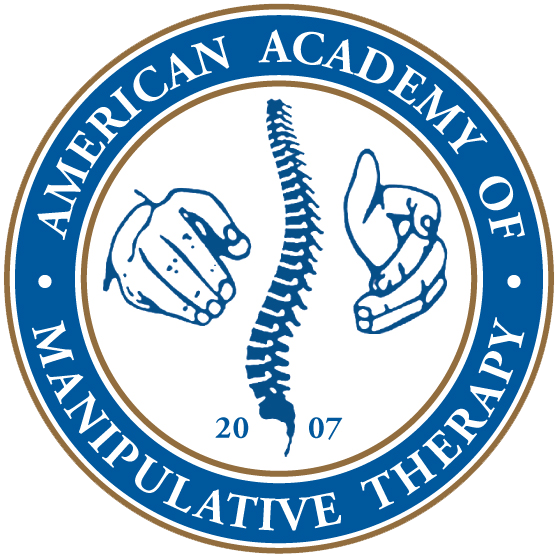SMT-1: High-Velocity Low-Amplitude Thrust Manipulation of the Cervical, Thoracic, Lumbar & Sacroiliac Joints
This two-day spinal manipulation course includes 70% hands-on practical training and 30% didactic lecture instruction. This spinal manipulation course focuses on the technical and practical hands-on skills required to perform high-velocity low-amplitude thrust spinal manipulation techniques in a competent and safe manner for all of the spinal regions. We have taught more PTs, MDs and ATCs the art and science of spinal manipulation than any other institute (in the world!). In fact, most instructors of other spinal manipulation programs are graduates from Spinal Manipulation Institute. Learn from the source, the worldwide leaders in spinal manipulation education, research and practice.
No prerequisites are needed for this 2-day course in spinal manipulation; however, registrants must be a licensed PT (or final year DPT, DC, or MD students), ATC, DO, MD, DC, NP, or PA in their respective state or country. The SMT-1 course is approved for 15-hours by FSBPT (ProCert), BOC (NATA), APTA, TPTA, and the respective State PT Board.
Participants will learn HVLA thrust manipulation techniques for the following articulations: C0-1 (occipito-atlantal joint), C1-2 (atlanto-axial joint), C2-7 (mid and lower cervical segments), C7-T3 (cervicothoracic junction), upper ribs 1, 2 and 3 (costotransverse & costovertebral joints), T4-9 (mid-thoracic facet articulations), T10-L1 (thoracolumbar junction), L2-4 (mid-lumbar spine facets), L5-S1 (lumbosacral junction), and the SI (sacroiliac) joint.
Current evidence will also be presented that underpins the use of spinal manipulation for cervicogenic headaches, cervicothoracic dysfunction, shoulder pain and upper rib syndromes, acute and chronic low back pain, sacroiliac joint dysfunction, and mechanical neck pain.
- Describe the indications, precautions and contra-indications (relative and absolute) of high-velocity low-amplitude thrust manipulation. Demonstrate pre-manipulative screening tests for cervical artery dysfunction (Vertebro-Basilar-Insufficiency) and upper cervical instability and understand their limitations.
- Improve the use of body and posture in application of high-velocity low-amplitude thrust, making them an integral part of technique delivery.
- Start combining leverages using multiple components in order to focus forces and build “mechanical barriers” at target motion segments.
- Develop the psychomotor skills necessary to appreciate the pre-manipulative barrier (end-feel) utilized in minimal leverage or momentum induced manipulative technique by concentrating on combining multiple leverages in order to minimize the overall amplitude and force required to achieve cavitation.
- Facilitate sound clinical reasoning processes behind the choice (or not) of high-velocity low-amplitude techniques and an appreciation of the current evidence base behind their application.
- Demystify the delivery of high-velocity low-amplitude thrust manipulation and develop an appreciation of its merits and limitations in every day clinical practice.
- Utilize clinical reasoning skills in the selection of high-velocity low-amplitude thrust manipulation techniques for a variety of neuromusculoskeletal dysfunctions.
- Demonstrate safe, competent and proficient performance of HVLA thrust manipulation techniques, including pre-thrust positioning and actual thrust application of mid and lower cervical, thoracic, rib, lumbar and sacro-iliac regions.
- Describe and demonstrate HVLA thrust manipulation for the junctional zones: upper cervical, cervicothoracic, thoracolumbar and lumbosacral regions.
- Learn how to effectively diagnose and treat upper, mid, and lower cervical joint dysfunction, sacro-iliac joint dysfunction, lumbar spine facet syndromes, second and third rib syndromes, and cervicothoracic joint dysfunction.
| 7:45 am | Registration |
| 8:00 | Indications, precautions, contraindications for use of HVLAT manipulation |
| 9:00 | Cervical (C2-7) rotatory HVLA thrust manipulation technique |
| 10:00 | Break |
| 10:15 | Cervicothoracic junction (C7-T3) HVLA thrust manipulation technique |
| 11:00 | Evidence based diagnosis and management of cervicogenic headaches |
| 12:00 pm | Lunch (on own) |
| 1:00 | Upper cervical HVLA thrust manipulation of Atlanto-Axial (C1-2) joint |
| 2:00 | Evidence for use of HVLA thrust manipulation in acute and chronic LBP |
| 3:00 | Break |
| 3:15 | Mid-lumbar (L2-4) HVLA thrust manipulation technique |
| 4:00 | 1st rib HVLA thrust manipulation technique |
| 4:30 | 2nd & 3rd rib HVLA thrust manipulation technique |
| 5:00 | Conclusion of day one |
| 7:45 am | Sign-in |
| 8:00 | Upper thoracic (T1-3) HVLA thrust manipulation technique |
| 9:00 | Cervical (C2-7) lateral-flexion translatory HVLA thrust manipulation technique |
| 10:00 | Break |
| 10:15 | Lumbo-sacral junction (L5/S1) HVLA thrust manipulation technique |
| 11:00 | Mid-thoracic (T4-9) HVLA thrust manipulation technique |
| 12:00 pm | Lunch (on own) |
| 1:00 | Upper cervical HVLA thrust manipulation of Occipito-Atlantal (C0-1) joint |
| 2:00 | Evidence based diagnosis of sacro-iliac dysfunction |
| 3:00 | Break |
| 3:15 | Sacro-iliac joint HVLA thrust manipulation technique |
| 4:00 | Thoraco-lumbar junction (T11-L1) HVLA thrust manipulation technique |
| 4:30 | Rib 4-8 HVLA thrust manipulation technique |
| 5:00 | Conclusion of course & issue of certificates |
Course registrations should be completed online; however, if you prefer to mail your registration form, please print and mail the COURSE REGISTRATION FORM with payment by check (made out to Spinal Manipulation Institute) or credit card to:
Spinal Manipulation Institute
445 Dexter Ave, Suite 4050
Montgomery, AL 36104
Registration & Cancellation Policy
A refund of course tuition may be obtained with cancellations that occur more than 21 days prior to the course start date (minus $200 administration fee); however, cancellations with less than 21 days notice only qualify for a 50% refund or 50% transfer to another course. Only 1 course transfer is permitted. No refunds are awarded after the course begins. AAMT is not responsible for any flight, hotel or other travel reimbursements in the event of course cancellation.



